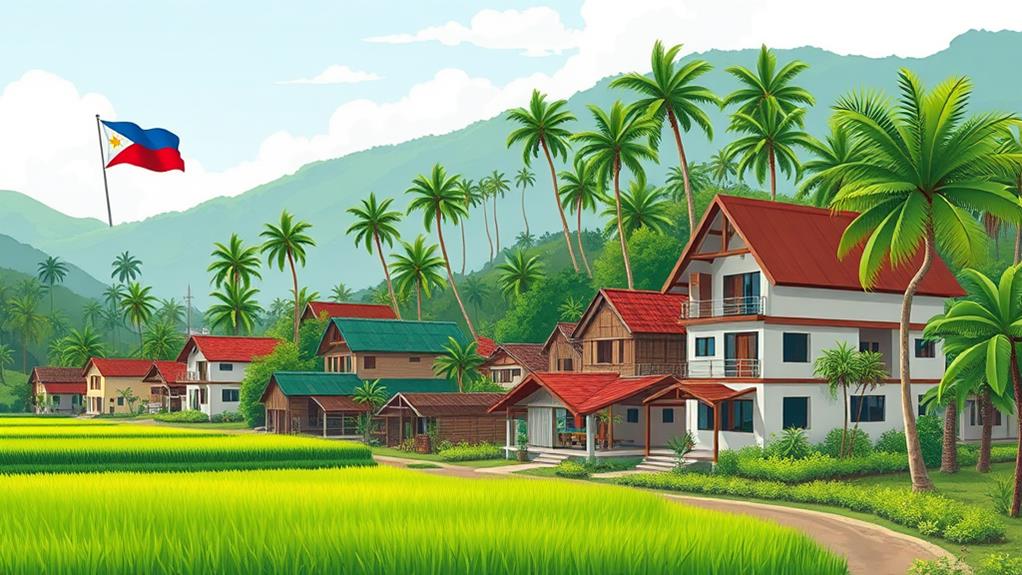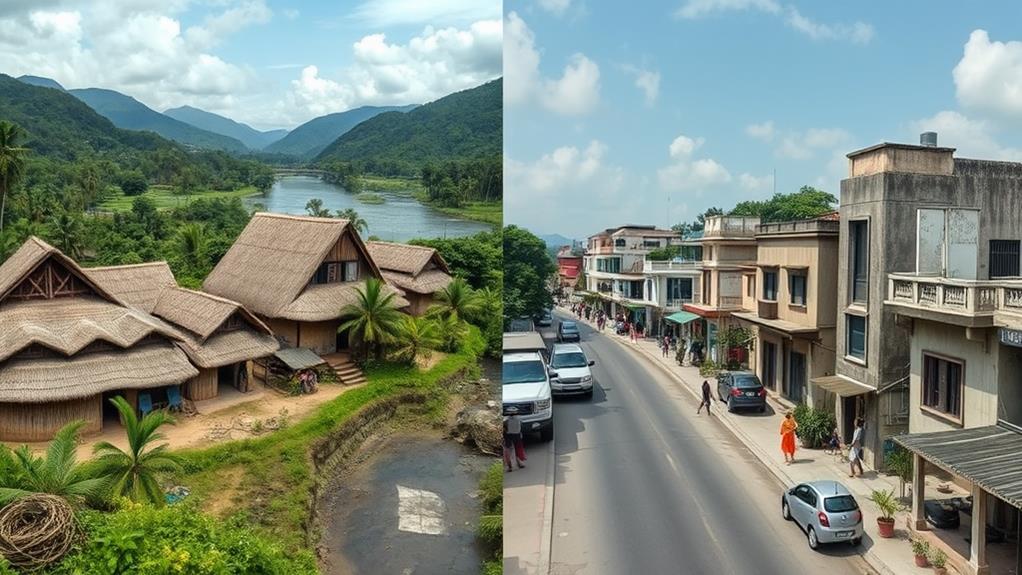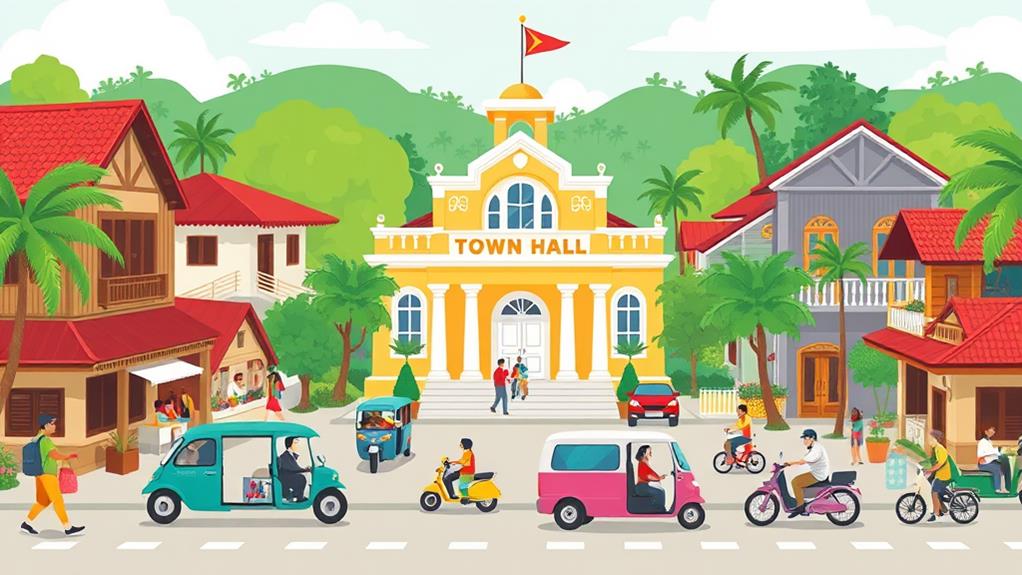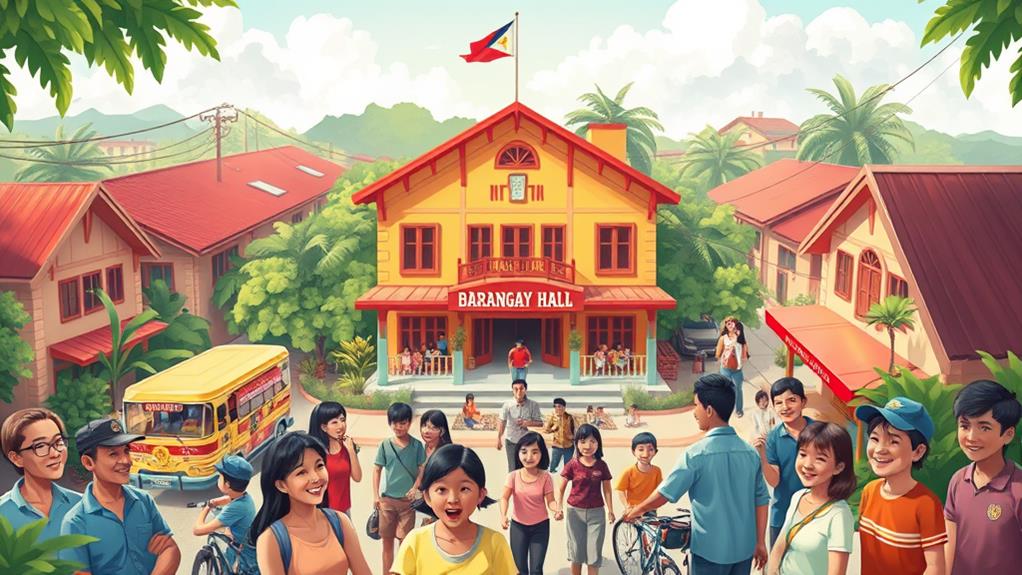The Barangay: A 2,000-Year-Old Pillar of Filipino Society
At the heart of the Filipino social structure lies the barangay, a system that has evolved over 2,000 years to become the foundation of local governance and community life. Introduced by Austronesian settlers, this system has undergone significant changes, transforming from autonomous villages to integral components of the national government.
The Evolution of the Barangay System
Today, there are over 42,000 barangays across the Philippines, showcasing the evolution of social hierarchy, economic and political context, and community dynamics. This remarkable growth demonstrates the significance of the barangay system in Filipino society.
The Significance of the Barangay System
The barangay system plays a crucial role in modern governance, where local customs meet national laws. This unique blend of traditional and modern governance structures enables the barangay to address the specific needs of its community while adhering to national policies.
In Brief
The barangay system is a testament to the country's rich history and cultural heritage. Its continued relevance in modern Filipino society underscores its importance as a foundation of local governance and community life.
Origins of Barangay System
The Austronesian settlers' arrival in the Philippines marked the beginning of the barangay system around 2,000 years ago. These settlers brought outrigger boats called balangay, which carried family groups from Borneo to the Philippines, forming the foundation of early Filipino social structure.
A barangay typically consisted of 30 to 100 families. These families formed independent communities with populations ranging from 100 to 500 individuals. Each community was ruled by a datu, chosen by consensus among community members, reflecting a governance structure based on personal ties and economic reciprocity.
The barangay social organization laid the groundwork for the Filipino social structure. This structure consisted of a ruling class, warriors, freemen, and slaves.
The well-organized nature of these communities facilitated the Spanish colonial administration's consolidation of barangays into larger municipal units, shaping the country's social and political landscape.
Social Hierarchy and Structure
Every Barangay Has a Social Hierarchy
In a barangay, there's a complex social hierarchy that governs the daily lives of its members. The ruling class, known as the Maginoo, holds significant power and influence. Below them are the Maharlika, skilled warriors, and the Timawa, freemen who enjoy relative freedom.
At the bottom of the social ladder are the Alipin, slaves who serve the higher classes.
Social Mobility is Limited
Despite this structured hierarchy, social mobility is limited, with opportunities for advancement scarce. This means that it's difficult for individuals to move up or down the social ladder.
Leadership in a Barangay
Leadership within barangays is typically held by a datu, chosen by consensus among community members. The datu is responsible for making important decisions for the community.
The Babaylan, revered spiritual leaders and mediators, play a crucial role in cultural practices and rituals. They provide spiritual guidance and help resolve conflicts within the community.
Barangay Structure and Alliances
Each barangay consists of 30 to 100 families, forming tight-knit communities that prioritize family ties and economic reciprocity. This means that families within a barangay are closely connected and rely on each other for support.
Alliances between barangays are often based on mutual protection and economic cooperation, rather than permanent allegiance. This means that barangays form temporary alliances with each other for protection and economic benefits, rather than being permanently tied to one another.
Economic and Political Context

Coastal Trade Routes and Economic Complexity
Coastal trade routes played a crucial role in the economic development of barangays, connecting them to foreign nations and facilitating cultural exchange. These trade routes enhanced economic complexity and cultural interactions, allowing barangays to engage in robust trade with foreigners.
This, in turn, laid the groundwork for robust local economies, where economic activity thrived.
The Influence of Spanish Cultural Exchange
The influence of Spanish cultural exchange during the colonial period further enriched the cultural fabric of these communities, leading to a blend of traditions and practices that are still evident today.
Evolution of Apex City-States
In larger barangays, such as Maynila and Tondo, collaborative efforts led to their evolution into apex city-states.
These barangays functioned as a political unit, where political influence was maintained through ritual alliances and economic reciprocity, rather than through formalized territorial control.
This unique governance structure fostered a sense of community stability and resilience against external pressures.
Social Hierarchy and Governance
Within these barangays, social hierarchies were established, allowing for organized governance.
The Datu class played a crucial role in leadership, economic management, and conflict resolution.
This intricate web of relationships and alliances formed the foundation of the barangay's economic and political context, shaping the social structures that defined these communities.
Historical Evolution of Barangay
The Origins of Barangay
The term "barangay" originates from the Austronesian word "balangay," referring to the boats used by early Filipino settlers to form coastal settlements.
These early settlers established small, independent villages consisting of 30 to 100 families, each led by a datu chosen through community consensus.
These villages formed the foundation of social structures in the Philippines, with local governance and community autonomy at their core.
Colonial Era Changes
During the Spanish colonial period, the barangay system underwent significant changes as these independent villages were consolidated into larger political units.
This led to the establishment of local governance structures that mirrored Spanish administrative practices.
Despite these changes, the barangay system was retained during the American colonial era, emphasizing local governance and community autonomy.
Modern-Day Barangays
Today, there are over 42,000 barangays in the Philippines, reflecting the historical evolution of these units from autonomous villages to essential components of the national government structure.
Modern Vs. Precolonial Barangay

The barangay, a fundamental unit of Filipino social structure, has undergone significant transformations over time.
In precolonial times, barangays were independent communities led by a datu, with governance rooted in personal ties and economic reciprocity. They typically consisted of 30 to 100 families, based on kinship and mutual protection.
In contrast, modern barangays are political units established under the Marcos administration in 1974, governed by elected officials, including a barangay captain and councilors.
Three key differences distinguish modern and precolonial barangays:
Governance structure: Precolonial barangays had leadership based on consensus among community members, whereas modern barangays have a structured electoral governance system. For instance, in precolonial times, the datu made decisions in consultation with community members, whereas modern barangays hold elections to choose their leaders.
Autonomy: Precolonial barangays operated independently or in loose confederations, whereas modern barangays are integral components of the national government structure. This means that precolonial barangays made their own decisions, whereas modern barangays must follow national laws and policies.
Focus: Precolonial barangays focused on local customs and traditions, whereas modern barangays are required to adhere to national laws and policies, reflecting a shift towards centralized governance. For example, precolonial barangays celebrated local festivals, whereas modern barangays implement national programs and projects.
These differences highlight the evolution of the barangay's role in Filipino social structures, from independent social units to integral components of the national government.
Community Dynamics and Governance
Barangay Structure and Governance
In the Philippines, nearly every citizen is a member of a barangay, a local government unit comprising 30 to 100 families that foster strong kinship ties and social cohesion.
Leadership and Decision-Making
The barangay is led by a datu or barangay captain, chosen by consensus, who serves as the primary decision-maker for local issues. This grassroots governance approach reflects cultural values of community and social engagement found in traditional practices.
Barangay Council Responsibilities
The barangay council, consisting of the captain and elected councilors, is responsible for creating local ordinances, managing finances, and organizing community events.
Conflict Resolution
Traditional conflict resolution methods are employed in barangays, where the Lupon Tagapamayapa mediates disputes to maintain peace and order within the community.
Impact on Community Dynamics
This grassroots approach to governance promotes social cohesion and community dynamics, allowing the barangay to thrive as a local government unit.
With over 42,000 barangays nationwide, this system plays a significant role in Filipino society.
Role in Local Administration

The Barangay: A Vital Unit of Local Administration
The barangay is the primary unit of local administration in the Philippines, responsible for delivering basic services and implementing national policies at the grassroots level.
Leadership and Structure
The barangay is headed by the Punong Barangay, supported by councilors and the Youth Council chairperson. The council is responsible for creating local ordinances, managing community resources, and addressing public concerns.
Key Functions
The barangay council creates local ordinances that address specific community concerns. For example, a barangay may pass an ordinance to regulate waste management or implement traffic rules.
The council also manages community resources, including funding allocated based on population size and land area. Additionally, the council addresses public concerns through public forums and community events, providing a platform for residents to voice their concerns and opinions.
Maintaining Peace and Order
The barangay plays a critical role in maintaining local peace and order through the barangay justice system. This includes the Lupon Tagapamayapa, which mediates disputes and reduces court congestion.
By performing these functions, the barangay ensures that community development initiatives receive financial support and that local concerns are addressed effectively.
In Summary
The barangay is a vital unit of local administration, responsible for delivering basic services, implementing national policies, and maintaining peace and order at the grassroots level.
Challenges and Reforms in Governance
The barangay system, a vital component of local administration, faces numerous challenges that hinder effective governance and community development. Limited resources, inadequate training for officials, corruption, and political interference are significant obstacles that impede the system's performance.
Challenge 1: Limited Resources
Limited resources in barangays result in inadequate public services. To address this, increasing budget allocation and resource sharing with NGOs can help bridge the gap.
Challenge 2: Political Interference
Political interference affects the impartiality and effectiveness of local governance, leading to biased decision-making. Strengthening independence and implementing transparent decision-making processes can mitigate this issue.
Challenge 3: Corruption
Corruption erodes public trust in barangay governance. Implementing accountability mechanisms and transparent financial reporting can help combat this problem.
Challenge 4: Inadequate Training
Inadequate training for officials leads to inefficient service delivery. Providing capacity-building programs for officials and fostering community engagement can improve service delivery.
To overcome these challenges, reforms aimed at enhancing transparency and accountability in barangay governance are essential for improving public trust and community engagement.
How Does the Concept of Family Relate to the Structure of Barangay in Filipino Society?
The concept of family is the cornerstone of filipino society and it significantly relates to the structure of Barangay. The Barangay is often considered as an extended family, where community members look out for one another, share resources, and work together for the common good. This tight-knit familial structure reinforces the values of cooperation, respect, and unity within the Filipino community.
Significance in Filipino Society

Barangays are the foundation of Filipino society, serving as the smallest unit of local governance and fostering a sense of community and social cohesion. With over 42,000 barangays across the Philippines, each one plays a vital role in addressing local issues and providing essential services to residents.
Local Governance and Community Engagement: Barangays are responsible for addressing community issues and providing essential services to residents. For instance, they organize community events, maintain cleanliness and sanitation, and provide aid to marginalized groups.
Economic Activity and Development: Barangays drive economic growth through infrastructure projects, community safety measures, and collaborations with local government agencies and NGOs. For example, they implement projects such as road construction, public market development, and waste management.
Peace and Order: Barangays maintain peace and order through local justice systems, such as the Lupon Tagapamayapa, which mediates disputes to reduce court congestion. This helps to resolve conflicts at the community level, promoting a sense of safety and security among residents.
Questions and Answers
What Is the Social Structure of a Barangay?
The social structure of a barangay is hierarchical and consists of distinct classes.
At the top of this structure is the datu, a leader chosen by community consensus, reflecting personal ties and economic reciprocity.
The datu's role is crucial in maintaining social cohesion through kinship ties, fostering a tight-knit community atmosphere.
Three main classes exist within the barangay: the ruling Maginoo, freemen Timawa, and slaves Alipin.
Social mobility is limited, with each class having its specific roles and responsibilities.
The Babaylan, respected spiritual mediums, play a key role in rituals and decision-making.
Their influence extends to both spiritual and community matters, further solidifying social bonds within the barangay.
What Is the Barangay System in the Philippines?
The barangay system is the smallest administrative division in the Philippines. It consists of over 42,000 units, each typically comprising 30 to 100 families.
These units have evolved from independent villages to integral parts of local governance.
Each barangay is led by an elected captain, supported by a council. They play a crucial role in addressing community issues, such as mediating disputes and implementing development programs to improve residents' social and economic well-being.
What Is Barangay by William Henry Scott About?
William Henry Scott's book "Barangay" is a comprehensive study of the smallest administrative unit in the Philippines.
Scott examines the history, social structure, and governance of barangays, exploring their evolution from independent entities to a defined administrative structure during Spanish colonization.
He provides valuable insights into the social hierarchy, kinship ties, and economic reciprocity within these communities. For example, he reveals how barangays were organized around kinship ties and shared economic activities, such as farming and fishing.
Scott's research offers a nuanced understanding of Filipino cultural identity and local governance.
Is Barangay the Fundamental Unit of Society?
The barangay is the fundamental unit of society. As the smallest administrative division, it serves as the basic building block of local governance and community organization.
Typically comprising 30 to 100 families, it's where grassroots participation in governance takes root.
The barangay plays a crucial role in mediating local disputes, maintaining order, and engaging residents in local issues, solidifying its position as the foundation of Filipino social structure.